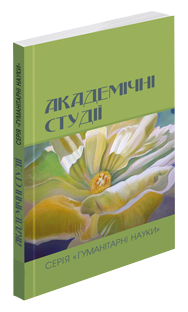Abstract
The development of artificial intelligence technologies is accompanied by the emergence of numerous Englishlanguage neologisms that require adequate translation and integration into the Ukrainian terminological system. The lack of unified approaches to the translation of AI neologisms, especially in the context of increasing dependence on machine and automated translation, leads to terminological uncertainty and complicates professional communication. The article investigates the strategies and principles of translating English-language neologisms in the field of artificial intelligence into Ukrainian in order to form a coordinated national terminological system. Based on the material of the “Dictionary of Basic Terms in the Field of AI”, developed by the Ministry of Digital Transformation of Ukraine, structural and semantic classification of neologisms is carried out, the main methods of their translation are determined, and the factors that influence the choice of translation strategies are outlined. The study is based on the analysis of terms of various thematic groups, from basic concepts and architecture of artificial intelligence to metaphorical nominations and complex multi-component constructions. Five structural and semantic groups of English-language AI neologisms are distinguished: basic concepts, highly specialized terms, metaphorical terms, multi-component neologisms and abbreviations. The dominance of tracing as the main translation strategy and significant use of transcoding, descriptive, metaphorical and hybrid translation is established. The factors influencing the choice of translation strategy are analysed. The principles of adapting Englishlanguage neologisms to the norms of the Ukrainian language are formed: systematicity, melodiousness, motivation, economy of linguistic means and transparency of semantics. The results of the study serve to form a coordinated Ukrainian terminological system of artificial intelligence and optimize translation practices in the field.
References
Біла книга з регулювання сфери ШІ в Україні. Міністерство цифрової трансформації України. 2024. URL: https://surli.cc/muwnje
Дорожня карта з регулювання сфери ШІ в Україні. Міністерство цифрової трансформації України. 2023. URL: https://surl.lu/mkizof
Кальнік О. П., Воробйова О. С., Симоненко А. В., Олешко М. В. Термінологічні проблеми перекладу наукових текстів у сфері IT технологій. Молодий вчений. 2019. № 5.1 (69.1). С. 187–190. URL: https://reposit.nupp.edu.ua/handle/PoltNTU/5946
Остапенко С. А., Сєвєрський М. А. Особливості відтворення IT-термінології в процесі перекладу. Modern Engineering and Innovative Technologies. 2023. Вип. 26. Ч. 4. С. 34–40. URL: https://doi.org/10.30890/2567-5273.2023-26-04-078
Павельєва А. К., Лобко І. О., Сотніченко І. В. Способи перекладу термінів-словосполучень у галузі інформаційних технологій. Імідж сучасного педагога. 2023. С. 58–63. URL: https://doi.org/10.33272/2522-9729-2021-3(198)-58-63
Сіняговська І. Ю., Крижовська В. Ю. Структурні особливості та функціонування комп’ютерних термінів у сфері інформаційних технологій. Інтелект. Особистість. Цивілізація. 2023. Вип. 1 (20). С. 49–55. URL: https://doi.org/10.33274/2079-4835-2020-20-1-49-55
Сливка Л. З. Особливості перекладу науково-технічної термінології з англійської мови на українську. Закарпатські філологічні студії. 2022. Вип. 27. Том 3. С. 144–149. URL: https://doi.org/10.32782/tps2663-4880/2022.27.3.27
Тищенко О. В., Юхимець С. Ю., Фоміна К. Є. Особливості перекладу українськомовної науково-технічної літератури галузі комп’ютерних технологій англійською мовою: лексичний аспект. Науковий вісник ПНПУ ім. К. Д. Ушинського. 2018. № 26. С. 121–132. URL: https://www.lingstud.od.ua/archive/2018/26/pv26-121-133.pdf
ДЖЕРЕЛА
Словник термінів у сфері штучного інтелекту. Міністерство цифрової трансформації України. 2024. URL: https://surli.cc/yxmfcs

This work is licensed under a Creative Commons Attribution 4.0 International License.

